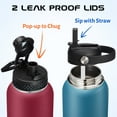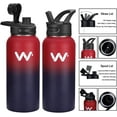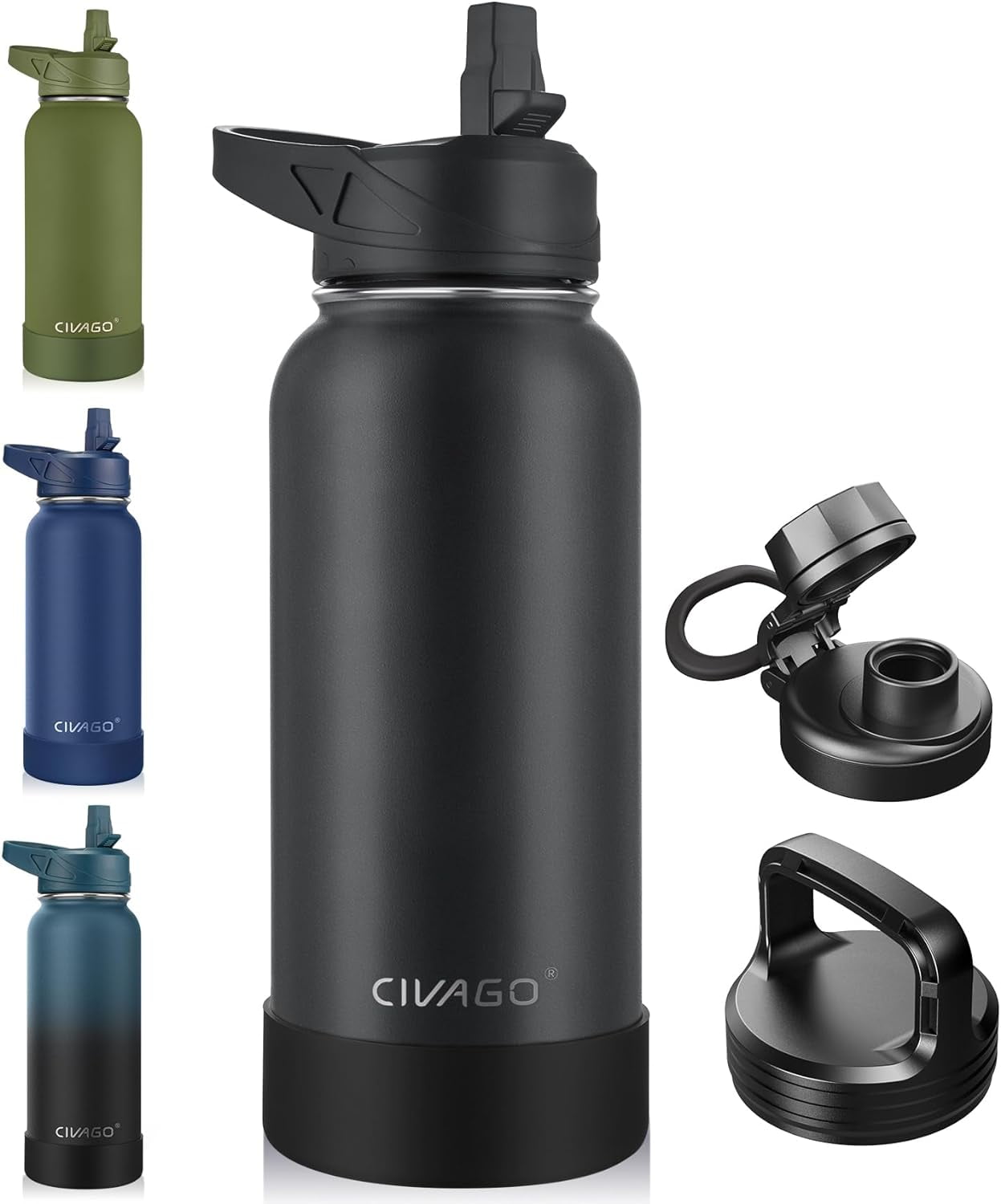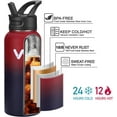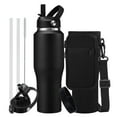32 Oz Insulated Water Bottle With Straw And Spout Lid
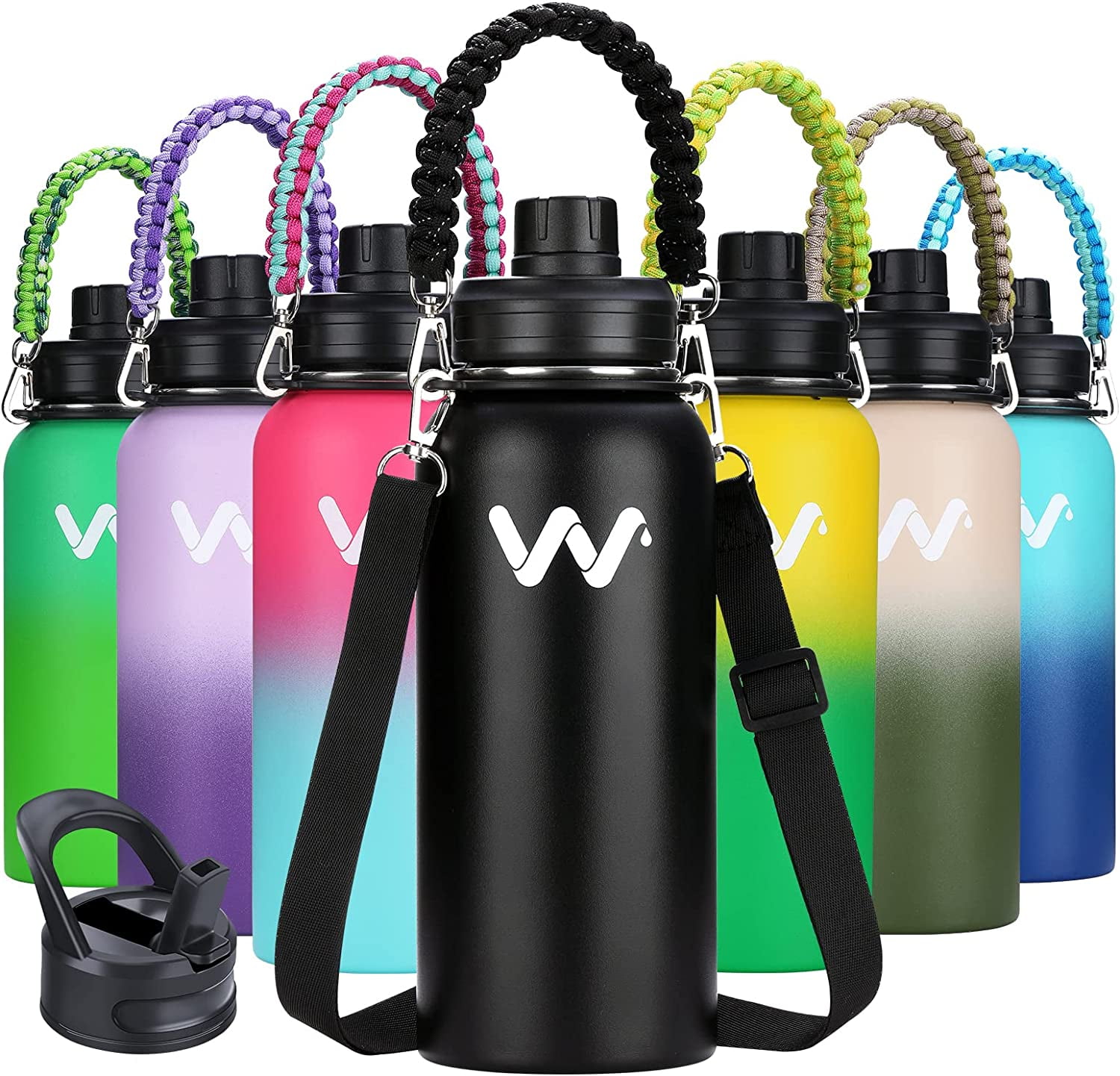
In an era defined by environmental consciousness and a growing awareness of personal health, the humble water bottle has undergone a significant transformation. No longer a mere receptacle for liquids, it has evolved into a symbol of sustainability, convenience, and even personal style. The 32 oz insulated water bottle with straw and spout lid, in particular, has emerged as a ubiquitous accessory, gracing office desks, gym bags, and hiking trails alike.
This article delves into the rise of this specific type of water bottle, examining its benefits, potential drawbacks, market trends, and the broader implications of its popularity. We will explore how this seemingly simple product reflects larger societal shifts towards health, environmentalism, and the pursuit of convenience in our daily lives. By analyzing data from market research and expert opinions, we aim to provide a comprehensive overview of the 32 oz insulated water bottle with straw and spout lid and its impact on consumers and the environment.
The Allure of Insulation and Hydration
The core appeal of the 32 oz insulated water bottle lies in its ability to maintain the temperature of its contents for extended periods. This is particularly attractive to individuals who prefer cold beverages on hot days or warm drinks during colder seasons.
Stainless steel, often double-walled and vacuum-sealed, is the primary material used in these bottles, offering superior insulation compared to plastic alternatives. This thermal performance, combined with the generous 32 oz capacity, allows users to stay adequately hydrated throughout the day without frequent refills.
Staying hydrated is essential for overall health, and having a readily available source of water encourages people to drink more. Studies have shown that increased water intake can improve cognitive function, boost energy levels, and support various bodily functions. The convenience of an insulated bottle makes achieving optimal hydration significantly easier.
Straws and Spouts: Functionality Redefined
The addition of a straw or spout lid further enhances the user experience. Straws allow for easy, hands-free drinking, making them ideal for activities like driving or exercising.
Spout lids, on the other hand, offer a more traditional drinking experience, often with a wider opening for faster hydration. The choice between a straw and a spout often comes down to personal preference, but both options prioritize ease of use and convenience.
Many bottles now feature interchangeable lids, offering consumers the flexibility to switch between a straw and a spout depending on their needs. This adaptability adds to the overall value proposition of these insulated water bottles.
Environmental Considerations: A Double-Edged Sword
While the rise of reusable water bottles is often touted as an environmentally friendly alternative to single-use plastic bottles, the reality is more nuanced. The manufacturing process for stainless steel bottles requires energy and resources, and improper disposal can lead to environmental problems.
However, the long lifespan and reusability of these bottles significantly offset their initial environmental impact compared to disposable plastic options. A 2018 study by the American Chemical Society found that stainless steel bottles generally have a lower environmental footprint than plastic bottles over their lifetime, assuming they are used frequently.
Concerns remain about the potential for leaching of materials from the bottle into the water, particularly with lower-quality products. Consumers are advised to choose bottles made from food-grade stainless steel and to follow the manufacturer's cleaning instructions to minimize any risks.
Market Trends and Consumer Preferences
The market for insulated water bottles is booming, driven by increasing health awareness and environmental concerns. Major brands like Hydro Flask, Yeti, and Thermos dominate the market, but numerous smaller companies have also emerged, offering a wide range of styles, colors, and features.
According to a report by Grand View Research, the global reusable water bottle market is expected to reach $10.5 billion by 2025. This growth is fueled by factors such as rising disposable incomes, increasing participation in outdoor activities, and growing awareness of the negative impacts of plastic waste.
Customization options, such as personalized engravings and unique color schemes, are becoming increasingly popular, allowing consumers to express their individuality. Social media trends also play a significant role, with popular influencers often showcasing their favorite water bottles and encouraging their followers to adopt reusable alternatives.
Potential Drawbacks and Considerations
Despite their numerous benefits, 32 oz insulated water bottles also have some potential drawbacks. Their size and weight can be inconvenient for some users, particularly those who prefer smaller, more lightweight options.
The cost of high-quality insulated bottles can also be a barrier for some consumers. While cheaper alternatives are available, they may not offer the same level of insulation or durability.
Cleaning can also be a challenge, particularly for bottles with intricate lids or straws. Proper cleaning is essential to prevent the growth of bacteria and mold, and some bottles may require specialized cleaning tools.
The Future of Hydration: Innovation and Sustainability
The future of the 32 oz insulated water bottle is likely to be shaped by continued innovation and a greater focus on sustainability. Manufacturers are exploring new materials and technologies to improve insulation, reduce weight, and minimize environmental impact.
Biodegradable or recycled materials may become more prevalent in the future, further reducing the environmental footprint of these bottles. Smart features, such as built-in water quality sensors and hydration reminders, could also become more common.
Ultimately, the 32 oz insulated water bottle with straw and spout lid represents a significant step towards a more sustainable and health-conscious lifestyle. By choosing reusable alternatives and prioritizing hydration, consumers can contribute to a healthier planet and a healthier themselves. The challenge lies in ensuring that the production and disposal of these bottles are managed responsibly to minimize their overall environmental impact.



